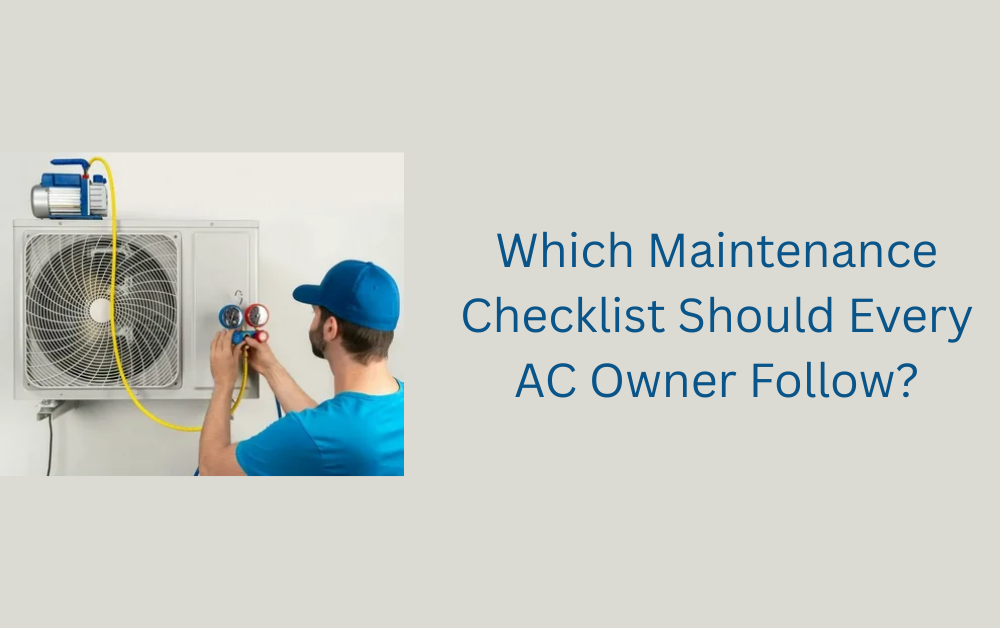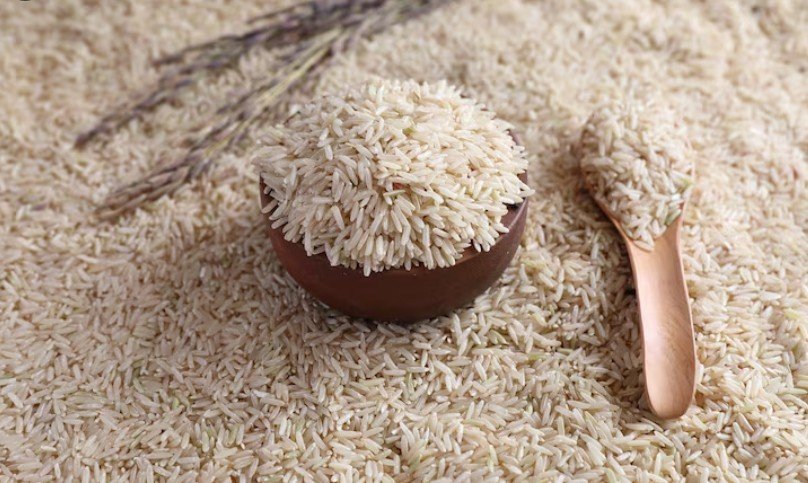Air conditioning units are essential for comfort, especially in hot climates. To keep your AC running efficiently, it’s important to follow a maintenance checklist. Regular maintenance not only helps improve performance but also extends the lifespan of your AC. In this blog, we will discuss the must-follow AC maintenance checklist that every owner should follow to keep their air conditioner working smoothly.
Why AC Maintenance is Important
Before diving into the checklist, let’s understand why maintaining your AC is so important. Over time, dust, dirt, and other debris can accumulate in your AC unit, leading to reduced efficiency. This can cause higher energy bills, poor air quality, and even breakdowns. Regular maintenance ensures that your AC is working at its best, saves you money, and reduces the need for costly repairs.
What Is Included in an AC Maintenance Checklist?
An AC maintenance checklist is a guide that helps you stay on track with the tasks needed to keep your air conditioner in top shape. It covers everything from cleaning the filters to checking refrigerant levels. Here’s a breakdown of what should be included in the checklist.
NOTE: Is your AC ready for a tune-up? Don’t wait until your system breaks down! Schedule a professional AC Maintenance Service Dubai today to ensure your air conditioner runs efficiently and keeps your home cool all year round. Our expert technicians are just a call away, ready to provide top-notch maintenance that saves you money and improves your AC’s performance. Contact us now to book your appointment!
1. Inspecting the AC Filters
Why Filter Inspection Matters
AC filters are one of the most important parts of your system. They trap dust, dirt, and other particles, ensuring that clean air circulates through your home. Over time, filters can get clogged, which makes your AC work harder and reduces airflow.
How Often Should You Check the Filters?
It’s recommended to check your filters every 30 days, especially if you have pets or live in a dusty environment. If you find that the filters are dirty, replace them. A clean filter will improve airflow and reduce strain on the system.
2. Cleaning the Coils
What Are the Coils and Why Do They Need Cleaning?
Your AC unit has two types of coils: the evaporator coil and the condenser coil. These coils help absorb heat and release it outside, making your home cool and comfortable. Over time, dust and dirt can build up on the coils, reducing their efficiency.

How Often Should You Clean the Coils?
It’s a good idea to clean the coils once a year. If you live in an area with a lot of dust, you might need to clean them more often. Regular coil cleaning helps maintain the efficiency of your AC and prevents overheating or breakdowns.
3. Checking the Refrigerant Level
Why Is Refrigerant Important?
Refrigerant is a special fluid that helps your AC cool the air. If the refrigerant level is low, your AC won’t be able to cool your home effectively. Low refrigerant levels can also cause the system to overheat, leading to expensive repairs.
How Do You Check the Refrigerant Level?
AC systems are sealed, so it’s difficult to check the refrigerant level on your own. If you suspect that the refrigerant is low, it’s best to call a professional. They will use a special gauge to check the levels and recharge the refrigerant if necessary.
4. Inspecting the Ductwork
Why Ductwork Inspection Is Crucial
Ducts carry cool air throughout your home. Over time, ducts can become clogged with dust or develop leaks, reducing the efficiency of your AC. When your ducts are blocked or leaking, your AC has to work harder to maintain the desired temperature, leading to higher energy bills.
How to Inspect Ductwork?
To inspect the ducts, check for visible signs of wear and tear, such as cracks or holes. You can also use a flashlight to look inside the ducts for dust or debris. If you notice any issues, call a professional to clean or repair the ducts. Regular inspection ensures that your AC is circulating air properly and efficiently.
5. Checking the Thermostat
Why the Thermostat Matters
The thermostat controls your AC’s temperature settings. If it’s not working properly, your AC may not reach the desired temperature, or it could run too long, wasting energy.
How to Check the Thermostat?
Make sure the thermostat is set to the correct temperature and check that it responds when you adjust the settings. You can also test the thermostat by comparing the temperature on the thermostat to a thermometer in the room. If they don’t match, the thermostat may need to be calibrated or replaced.
6. Inspecting the Condenser Unit
What Is the Condenser Unit?
The condenser unit is located outside and helps release heat absorbed by the AC’s refrigerant. This unit is exposed to the elements, so it can accumulate dirt, leaves, or other debris, blocking airflow and causing the system to overheat.
How to Maintain the Condenser Unit?
To maintain the condenser unit, clear any debris around it and make sure the area is well-ventilated. If you notice any dirt buildup, use a hose or a brush to clean the coils. Keep the condenser unit free from leaves, branches, or any other obstructions.
7. Checking the Drain Line
What Is the Drain Line and Why Is It Important?
The drain line carries excess moisture out of the AC. If the drain line gets clogged, it can lead to water damage and mold growth inside your system.
How to Check the Drain Line?
To check the drain line, inspect the area around the drain pipe for any signs of moisture. You can also pour a small amount of water through the drain line to ensure that it flows freely. If you notice any blockages, use a wet-dry vacuum to clear the line. Regular maintenance of the drain line prevents water damage and keeps your AC system running smoothly.
8. Checking the Insulation
Why Insulation Matters
Proper insulation helps maintain the temperature inside your home and ensures that your AC doesn’t have to work harder than necessary. If the insulation around your AC unit is damaged or missing, you may experience increased energy costs and uneven cooling.
How to Check Insulation?
Check the insulation around your ducts and refrigerant lines for any visible damage or wear. If you find any areas where the insulation is missing or damaged, replace it to improve energy efficiency.
9. Testing the AC System
How to Test the System?
Once all the maintenance tasks are complete, it’s important to test the system to ensure everything is working as it should. Turn on your AC and monitor its performance. Check that the airflow is strong and that the system is cooling your home to the desired temperature.
What to Look for During Testing?
During testing, pay attention to any strange noises, uneven cooling, or unusual smells. If you notice any of these signs, it’s a good idea to call a professional to inspect the system further.
10. Professional AC Maintenance Services
While you can do a lot of the maintenance tasks yourself, it’s important to have a professional technician inspect your AC at least once a year. They have the experience and tools to perform a thorough checkup, including checking refrigerant levels, inspecting electrical components, and cleaning hard-to-reach parts of your AC.
Why You Need a Professional for AC Maintenance
A professional technician can spot potential issues early, preventing costly repairs down the road. They can also handle more complex tasks, like inspecting and repairing the compressor, testing electrical connections, and ensuring that the system meets safety standards.
How to Choose a Reliable AC Technician?
When choosing a technician, look for someone who is licensed and experienced. Read customer reviews and ask for references. A reliable technician should offer a clear breakdown of the services they’ll perform and the cost upfront.
Conclusion
Maintaining your AC is crucial for keeping it running smoothly and efficiently. Following this checklist regularly will help ensure that your system works at its best, keeps your home cool, and saves you money on energy bills. Remember that some tasks, like checking refrigerant levels and inspecting electrical components, are best left to professionals. If you ever feel unsure about any aspect of AC maintenance, don’t hesitate to call a technician to ensure your system stays in top shape for years to come.
For more insightful articles related to this topic, feel free to visit techners












Leave a Reply